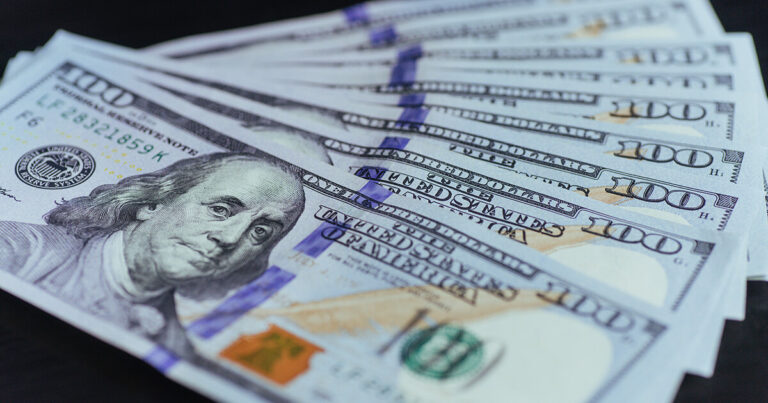
Once again, risk-off sentiments drove the forex exchange market, catapulting safe-haven currencies to the top. The negative sentiments fueled market volatility as traders rushed to put their investments in safer places.
Riding off the back of the negative tensions, the Swiss franc and Japanese yen were the biggest winners, with the Australian dollar coming in at the bottom.
Market Fundamentals

Risk Aversion Drove the Forex Market
Risk aversion sentiments sparked by three factors drove the forex market.
Top on the list, the Omicron variant rattled the forex market, a painful reminder that the pandemic is still with us. So far, the variant has rapidly spread to 38 countries, with many nations reverting to strict containment measures.
Despite being less lethal, Omicron has caused more jittery than its predecessors. Fears of new infections, higher transmission rates, and yet another round of lockdown measures triggered massive sales of risk assets.
Omicron is a huge concern now, and scientists are yet to figure out how fatal it is and the effectiveness of the available vaccines against it. The US restricted travels from South Africa and its neighboring countries on Monday.
As the world grappled with the new variant, Federal Reserve Chair Jerome Powell also fueled the risk aversion sentiments. Tuesday, Jerome’s statement surprised financial traders. Powell indicated that due to the inflationary pressure tapering process may come sooner.
In addition, negative economic updates exacerbated risk aversion. The G7 nations reported poor economic data, mainly because of rising inflation and supply chain issues. For instance, Australia’s third-quarter GDP declined, and the US posted poor employment reports.
G7 Fundamental Analysis and Economic Review
Table: g7 nations performance summary
| Currency pair | 27th Nov 2021 | 3rd Dec 2021 | Average price | Percentage change | Remarks |
| USD | 96.338 | 96.445 | 96.128 | 0.03 | increase |
| GBPUSD | 1.3311 | 1.3231 | 1.3284 | 0.8171 | drop |
| EURUSD | 1.1291 | 1.1313 | 1.1312 | 0.0354 | increase |
| USDCHF | 0.9230 | 0.9178 | 0.9200 | 0.6602 | drop |
| USDJPY | 113.52 | 112.80 | 113.07 | 0.51 | drop |
| USDCAD | 1.2738 | 1.2942 | 1.2796 | 0.4380 | increase |
| AUDUSD | 0.7140 | 0.7001 | 0.7092 | 1.7129 | drop |
| NZDUSD | 0.6834 | 0.6739 | 0.6801 | 1.2745 | drop |
US dollar Currency News
The greenback extended its rally for a sixth straight week. According to US dollar currency news, the greenback almost mirrored the previous week’s performance. It rallied by 0.03 percent to 96.445, following a 0.04 percent increase.
Traders also scrambled for the dollar due to FED Chair Powell’s comments and the latest coronavirus variant threats. Early in the week, increased infections and consumer confidence weighed on the dollar.
Consumer prices surged, lowering the consumer confidence index to 109.5 from 111.6. Midweek, the US posted growth in the manufacturing and ADP payroll sectors.
November’s manufacturing index shot to 61.1 from 60.8, while ADP payrolls surged by 534 thousand. And jobless claims increased to 222 thousand from 194 thousand.
Notably, the continuous jobless claims dropped below the 2000-thousand level since March 2020. On Friday, nonfarm payrolls and service sector figures stirred the forex exchange market.
While the nonfarm payrolls rose modestly by 210 thousand, the unemployment rate eased to 4.2 percent from 4.6 percent. Impressively, the service sector index jumped to 69.1 from 66.7.
But while the economic data were positive to the forex market, FED Chair Powell’s statement accelerated risk-off sentiments. Powell indicated the need to hasten the tapering process.
The Chair also suggested removing the word “transitory” when referring to inflation, indicating a rate hike soon.
British Pound Trend Forecast
In the week, the Pound weakened by 0.81 percent to 1.3236. Previously, it had reduced by 0.85 percent. Britain had a relatively quiet week leaving pound performance to economic data and coronavirus concerns.
The composite and service sector index supported the British pound trend forecast earlier in the week. The service sector index rose to 58.5 from 54.6. And amidst heightened inflation, new business growth spiked to a five-month high.
According to BoE, mortgage approvals decreased to 67 thousand, the lowest since June 2020. And UK house yearly prices jumped to 10 percent, with November’s hitting 0.9 percent.
In addition, the Bank of England’s dovish stance towards rate hikes further weakened the Pound and euro.
On Friday, Saunders, Bank of England’s Monetary Policy Committee, said, “the bank may turn off December interest rate increase due to Omicron concerns.”
Euro to Dollar this Week
In a relatively busy week, the euro lost 0.0354 percent to 1.1313. Previously, it had rallied by 0.24 percent. Inflationary and private sector data impacted the exchange rate of euro to dollar this week.
Inflationary pressure rose to 4.9 percent from 4.1 percent. The Eurozone’s private sector composite index increased to 55.4 from 54.2. Inflation in Germany hit six percent and 3.4 percent in France.
The unemployment rate dropped in Germany, and consumer spending dropped in France. And the retail sales dropped 0.2 percent in the Eurozone.
Coronavirus pandemics significantly contributed to the weakening of the euro. Europe recorded increased cases and reverted to lockdown measures and strict policies for unvaccinated individuals.
CHF Currency News
In the week, the Swiss franc gained 0.6602 percent to 0.9178, after a previous 0.4525 percentage gain. Negative sentiments and positive economic reports uplifted the Swiss currency to the top slot.
Omicron variant rapid spread and containment measures across Europe favored the Swiss franc. The KOF Swiss Economic Barometer declined to 108.51, lower than the 110.2 level projected by economists.
Industrial production also fell below target, hitting 62.5 against 64.4 expected level. CHF currency news also highlights that retail sales records for Switzerland spike by 0.6 percent.
Cad USD Trend Forecast
In the week, the Canadian dollar weakened by 0.41 percent to 1.2843. Previously the loonie had shrunk by 1.19 percent to 1.2791. Economic data and coronavirus concerns impacted the cad usd trend forecast.
GDP and employment figures uplifted the loonie in the forex exchange market. Canada’s third-quarter economy grew by 1.3 percent, reversing a previous decline of 0.8 percent. However, its yearly economy expanded by 5.4 percent.
Employment data also uplifted the loonie. In November, Canada recorded over 153 thousand new employees, dropping the unemployment rate to 6.0 percent from 6.7 percent.
Asia-Pacific Forex Exchange Market

While the bulls took control of the Yen, the bears took charge of the risk assets again.
The US to Aud Currency Exchange
The Australian dollar suffered yet another weekly loss. In the week, it fell 0.71 percent to 0.7001, having dropped 1.53 percent in the week before. Earlier in the week, private sector credit data and company gross operating profit drove the US to aud currency exchange rate.
Australia’s third-quarter profit increased by four percent, but lower than a previous 7.1 percent profit jump. However, private sector credit rose slightly by 0.5 percent after a similar performance in the previous month.
On Wednesday, third-quarter GDP provided some relief, with Australia’s economy doing better than expected. While economists had predicted a 2.7 percent decline, the economy shrank by 1.9 percent.
On Friday, trade data spurred the forex exchange market. Australia’s trade surplus narrowed to A$11.220 billion from A$12.243 billion.
Kiwi Currency News
The New Zealand dollar also suffered another weekly loss deteriorating by 0.73% to 0.6772. Previously it had endured a 2.6 percent loss. According to kiwi currency news, coronavirus fears and poor economic data damaged New Zealand’s dollar.
The kiwi dollar fell to a new low on Monday as November’s business confidence dropped from 13.4 to -16.4. But, the resurgence of Coronaviruses and lockdown conditions ultimately weakened the New Zealand dollar.
fx jpy news
Fx jpy news reports the Yen bolstered for a third consecutive week. It rallied 0.51 percent to 112.800, having rallied by a similar margin in the previous week.
Earlier in the week, retail sales figures supported the Yen. The sales increased by 0.9 percent, reversing a previous drop of half a percent. Industrial production and private sector figures uplifted the Yen on the economic front.
The latest forex market news shows industrial production rose 1.1 percent, reversing a previous drop of 5.4 percent. And the private-sector index spiked to 53.0 from 50.7.
Forex Exchange Market Forecast for Next Week
We expect the Omicron variant to continue driving the forex market. Investors will also focus on economic data. Typical of a risk-off mood in the forex exchange market, the traders moved to the haven safety net in the week.
In the end, the dollar gained against risk-linked assets but lost to the Pound, swiss franc, and Yen.
Always look out for our weekly review for the latest updates!




